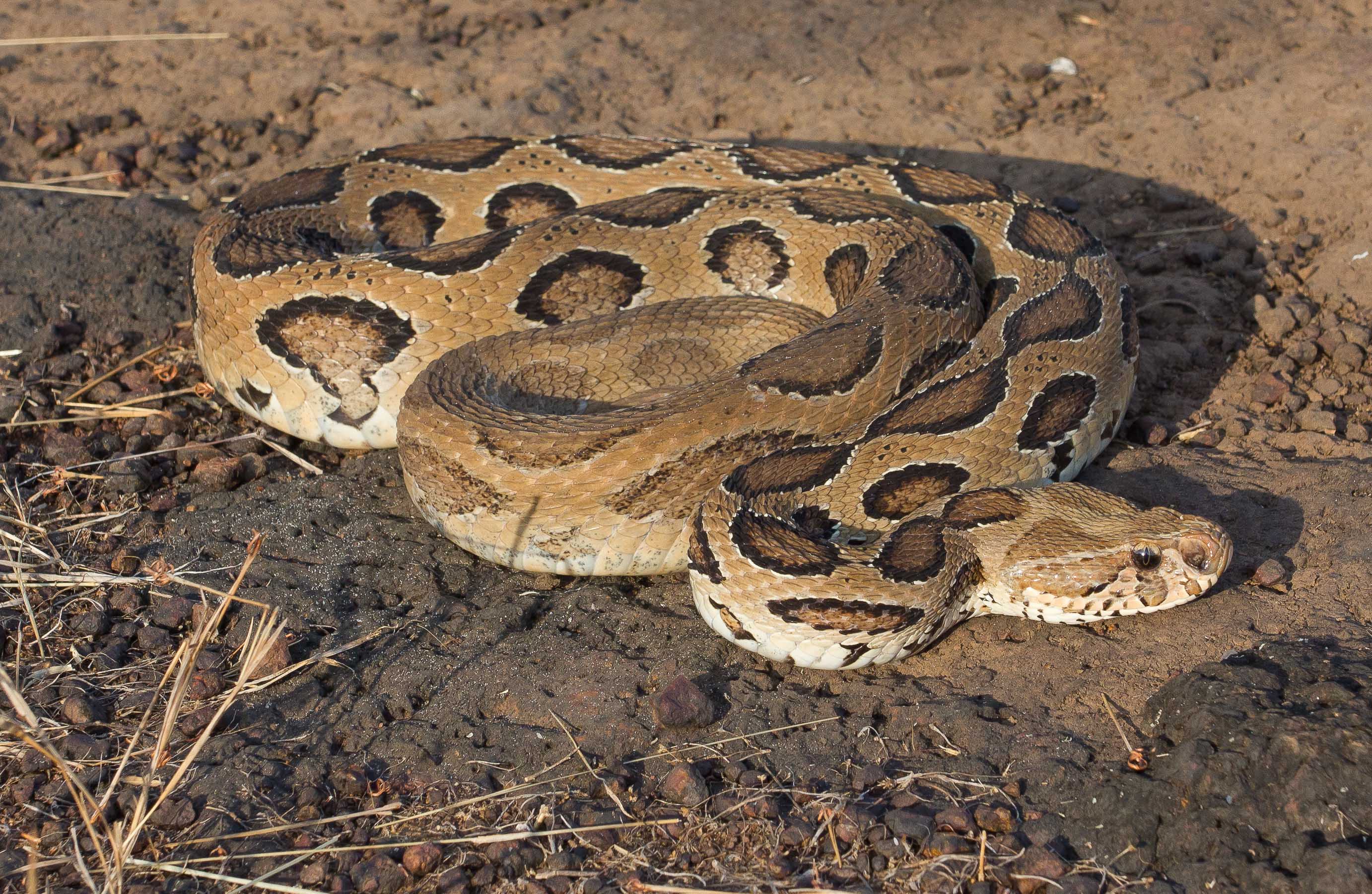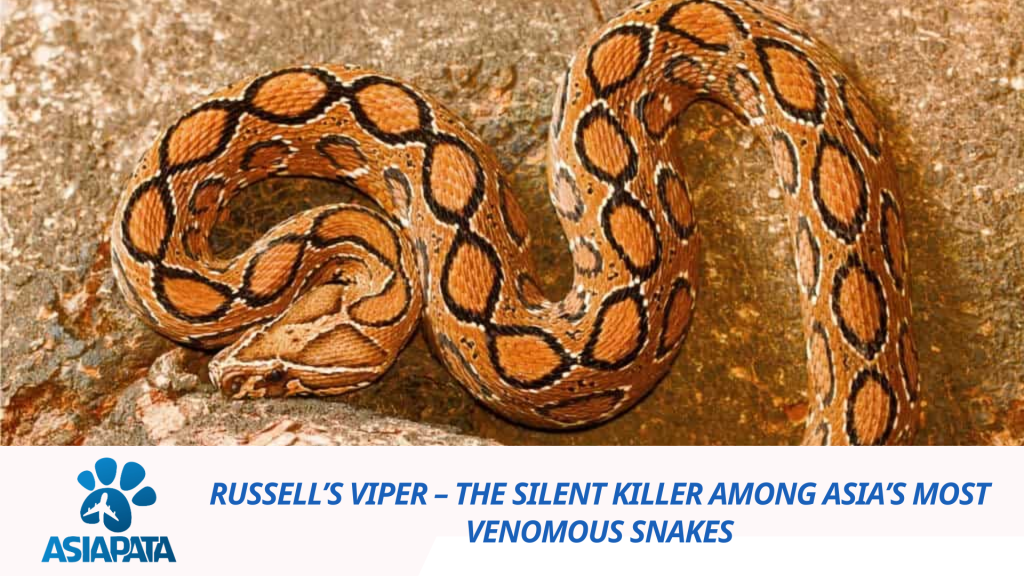When it comes to the most dangerous snakes in Asia, Russell’s Viper (Daboia russelii) stands out not just for its highly potent venom but also for its wide distribution and high rate of human encounters. While cobras and kraits are often feared for their neurotoxins, Russell’s Viper brings a different kind of danger — its venom targets blood and tissue, causing immense internal damage within hours.
1. General Information

-
Scientific name: Daboia russelii
-
Common name: Russell’s Viper
-
Length: Typically 1.2–1.6 meters
-
Habitat: Grasslands, farmlands, forests, and even near human settlements across South and Southeast Asia, including India, Sri Lanka, Bangladesh, Thailand, Myanmar, and parts of Vietnam
This viper is easily recognized by its striking pattern of three rows of dark brown or black spots on a yellowish or tan background, running along the entire body. Despite its slow-moving nature, it is extremely dangerous and accountable for thousands of snakebite incidents in Asia each year.
2. Venom and Effects
Russell’s Viper possesses hemotoxic venom, which affects the victim’s blood and organs. Unlike cobras or mambas that kill by paralyzing the nervous system, Russell’s Viper destroys red blood cells, induces clotting issues, and damages kidneys.
Symptoms after a bite may include:
-
Sudden pain and swelling around the bite
-
Severe bleeding from gums, nose, or urine
-
Drop in blood pressure
-
Kidney failure
-
Internal bleeding and organ damage
-
In severe cases, death within 48–72 hours if untreated
What makes it even more dangerous is its tendency to stay still and well-camouflaged, leading many to accidentally step on or near it.
3. Why Is Russell’s Viper So Dangerous?
-
High venom yield: A single bite delivers enough venom to kill several adult humans.
-
Common in populated areas: Unlike some forest-dwelling species, Russell’s Viper often roams agricultural fields.
-
No warning signs: It doesn’t always hiss or rattle before attacking, making it hard to detect.
-
Delayed symptoms: In some cases, symptoms worsen rapidly hours after the bite, reducing treatment windows.
According to the World Health Organization, Russell’s Viper is responsible for more deaths and long-term complications in Asia than almost any other snake.
4. Distribution and Human Conflict

Russell’s Viper thrives in both rural and suburban areas, often hiding in rice fields, under bushes, or stone piles. Farmers and field workers are most at risk. In countries like India and Myanmar, it’s part of the infamous “Big Four” — the four deadliest snakes responsible for the majority of fatal bites.
5. Treatment and Antivenom
Immediate medical treatment is crucial in case of a bite. Antivenom exists but must be administered in a controlled medical environment.
Recommended actions if bitten:
-
Stay calm and still to slow venom spread
-
Immobilize the affected limb
-
Seek emergency medical help immediately
-
Do not attempt to suck out the venom or apply ice
Even after recovery, some patients may suffer chronic kidney damage, limb necrosis, or amputation due to tissue destruction.
6. Conservation Status
Despite its dangerous reputation, Russell’s Viper is not an endangered species. However, its ecological role is vital — it helps control rodent populations, which are harmful to crops and carry diseases.
Educating local communities and improving snakebite first-aid awareness can help reduce unnecessary killing of this snake and ensure safety for both people and wildlife.
Conclusion
Russell’s Viper is a terrifying yet fascinating species. Known for its deadly hemotoxic venom, stealthy nature, and high risk of human contact, it has become a major public health concern in Asia. Yet, like all wild animals, it deserves respect, awareness, and coexistence rather than fear
Read more:
Comment reconnaître les signes de douleur ou d’inconfort chez votre animal de compagnie?
Comment reconnaître les signes de douleur ou d’inconfort chez votre animal de compagnie?

